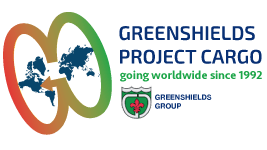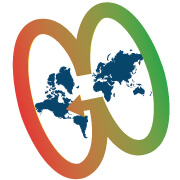IMO 2020 Low Sulphur regulations
1. When does the Low Sulphur Surcharge/Adjustment Clause start effecting our fleet?
The Low Sulphur Surcharge/ Adjustment Clause will apply to all cargoes loaded on voyages
commencing on or after September 1st 2019.
2. How high is the Low Sulphur Surcharge?
a. For tramp services, USD 2.50 per freight ton for each USD 10.- difference between the base price
for IFO 380 as per Carriers’ indication/offer and the MGO price (as per CleanLynx report) valid on
vessel’s arrival date at the loading port.
b. For liner services, USD 35.- per freight ton, irrespective of the volume, loading and discharging region
3. The Low Sulphur Surcharge/Adjustment Clause appears to be very high, why is this?
The additional surcharge is not only related to the difference in fuel costs, but also to the preparation
and cleaning of the tanks, piping systems and engines. Please also refer to 5. All surcharges are based
on a mixed calculation taking into account all expenses we will incur as a result of the new regulation.
With regard to our liner services, we currently charge several bunker surcharges like “ECA-Surcharge”
or “Emergency BAF”. These surcharges will now be included in the new Low Sulphur Surcharge so
that we will only have one fuel related surcharge. This is done to simplify matters and to create more
transparency with our clients.
4. Why are Tramp- and Liner-Services not using the same surcharge or calculation method?
While the Liner-Service operates their ships in defined service patterns, offering a certain predictability
to clients that quite often place bookings several weeks in advance, the Tramp-Segment is confronted
with constant changes on a daily basis and last minute bookings. Thus, the Tramp-Segment needs
a calculation method that supports the constantly changing situation, whereof the Liner-Clients are
looking for less fluctuation. Furthermore, the Liner-Segment is only using a very limited number of ship
types, whereas the Tramp-Segment has a much higher and constantly changing diversity of ships in its
fleet.
5. Why are we making changes already as of September 1st, if IMO 2020 regulations only become
applicable as of January 1st 2020?
In order to become fully compliant with the new IMO 2020 regulation by January 1st 2020, all
ZEAMARINE vessels need to be prepared and ready by December 31st 2019 at the latest. In detail, that
means that fuel tanks and piping systems being used for heavy fuel oil right now need to be cleaned by
either mixing the actual fuel with special additives or by physical cleaning which requires emptying the
tanks first. The use of additives will require further work on the main engines and take several weeks,
while physical tank cleaning requires the ships to get out of service for several days. Once tanks are
cleaned, old fuel grades cannot be used any longer. Since not all ships can be cleaned at the same
time, this process starts already as of September 1st.
6. Until when does the Low Sulphur Surcharge apply?
The Low Sulphur Surcharge for our liner services will form part of our pricing as of September 1st, 2019.
The surcharge may fluctuate and the latest surcharge bulleting can be viewed on our website.
For our tramp services, the surcharge will be in effect from September 1st, 2019 until early 2020. Our
pricing will then be reviewed and adjusted accordingly.
7. Will the Low Sulphur Surcharge always remain like this?
The Low Sulphur Surcharge for Tramp- and Liner-Services is based on individual, trade- and vesselspecific
parameters, resulting in a mixed calculation method. Based on this, the surcharge will be
reviewed and adjusted subject to changes in fuel prices. Review and possible adjustments will be made
on a monthly basis.
8. Which actual costs are covered by the Low Sulphur Surcharge?
The Low Sulphur Surcharge covers all the actual expenses needed to prepare the ZEAMARINE fleet for
IMO 2020 and will cover the price differential between actually used fuel and IMO 2020 compliant fuel
grades.
9. Why does every customer have to pay the same surcharge, irrespectively of volumes, distances,
vessel type and consumption?
It is our goal to keep this change as simple as possible. The baseline amount of the Low Sulphur
Surcharge was accurately evaluated based on past and actual performance data, which then resulted
in average values. With this method, we only need one number for Tramp- and one number for Liner-
Services globally.
10. Can the amount of the Low Sulphur Surcharge be negotiated?
The amount of the Low Sulphur Surcharge cannot and must not be negotiated. It has to be charged
in full. The background is that the Low Sulphur Surcharge needs to be filed with certain authorities,
for example FMC in the USA.
11. Can the Low Sulphur Surcharge be waived?
Waiving the Low Sulphur Surcharge may be considered under certain circumstances. Please note that
this will require written approval by the respective Regional Director or the Vice President Global Liner
Services.
12. Fixed freight is required due to budgetary or other purposes. How do we deal with that?
We are aware that some existing sales contracts do not allow for any bunker price variables. Depending
on certain circumstances, we may accept to freeze the Low Sulphur Surcharge and to integrate the
same into a fixed, all-in price. Please note that this will require written approval by the respective
Regional Director or the Vice President Global Liner Services.
13. Why have we opted to use Low Sulfur Fuel Oil instead of installing Scrubbers?
As part of our strategy to reduce negative externalities and lower our impact on the environment, we
have evaluated that Low Sulfur Fuel Oil is the most environmentally friendly way to comply with IMO
2020 regulation, reducing pollution and ocean waste. Scrubbers create a toxic by-product that must
be disposed of, only shifting the created pollution to the land or the sea, not reducing overall impacts.






